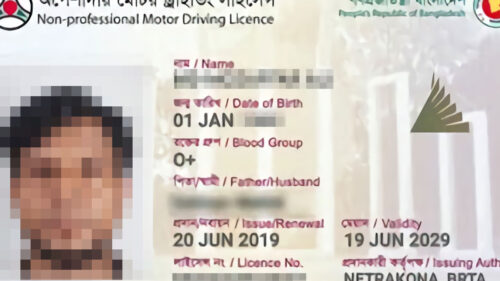
Elon Musk’s X fails bid to escape Australian fine
Elon Musk’s X fails bid to escape Australian fine Elon Musk’s X on Friday lost a legal bid to avoid a $417,000 fine levelled by

Becoming a full stack web developer in 2023 requires a comprehensive understanding of both front-end and back-end development technologies. This guide will outline the steps you can take to become a full stack web developer in 2023, including the skills you need to learn, the tools you should master, and the best practices to follow.
1. Understanding the Basics Before diving into full stack development, it’s important to have a strong foundation in web development basics. This includes HTML, CSS, and JavaScript. These languages are the building blocks of the web and are essential for both front-end and back-end development.
2. Front-End Development Front-end development focuses on the user interface and user experience of a website. To become a full stack web developer, you’ll need to master front-end technologies like:
3. Back-End Development Back-end development involves working with server-side technologies to manage the logic and data of a web application. To become a full stack developer, you’ll need to learn:
4. Version Control Version control is essential for collaborating with other developers and managing your codebase. Learn how to use Git, a popular version control system, to track changes to your code and collaborate with others.
5. Development Tools Familiarize yourself with development tools that can streamline your workflow and improve productivity. This includes text editors like Visual Studio Code, IDEs (Integrated Development Environments) like IntelliJ or Eclipse, and browser developer tools for debugging and testing.
6. Build and Deployment Learn how to build and deploy web applications using tools like Webpack, Gulp, or Grunt. Understand the basics of web hosting and deployment platforms like Heroku, AWS, or Netlify.
7. Security and Performance Understand the basics of web security and best practices for securing your web applications. Learn about performance optimization techniques to ensure your applications are fast and responsive.
8. Continuous Learning The field of web development is constantly evolving, so it’s important to stay updated with the latest technologies and trends. Follow blogs, attend conferences, and participate in online communities to continue learning and growing as a developer.
9. Front-End Frameworks and Libraries In addition to mastering the basics of front-end development, it’s beneficial to learn popular front-end frameworks and libraries. These tools can help you build more efficient and feature-rich web applications. Some key frameworks and libraries to consider learning include:
10. Back-End Frameworks Along with mastering a server-side language, you should also consider learning a back-end framework. These frameworks can help you streamline your development process and build more scalable and maintainable applications. Some popular back-end frameworks to explore include:
11. Database Management Understanding how to work with databases is crucial for full stack developers. You should be familiar with both relational and non-relational databases, as well as how to interact with them using your chosen server-side language. Some key concepts to learn include:
12. Testing and Debugging Effective testing and debugging are essential for building reliable and high-quality web applications. Learn how to write unit tests, integration tests, and end-to-end tests to ensure your code works as expected. Familiarize yourself with debugging tools and techniques to identify and fix issues in your code.
13. Soft Skills In addition to technical skills, full stack developers should also possess strong soft skills. These include communication, problem-solving, teamwork, and time management skills. These skills are important for collaborating with other team members and stakeholders and delivering projects on time and within budget.
14. Portfolio and Projects Building a strong portfolio of projects is essential for showcasing your skills and experience as a full stack developer. Work on personal projects, contribute to open-source projects, or collaborate with others to build real-world applications. This will not only demonstrate your abilities but also help you learn new technologies and techniques.
15. Networking and Community Involvement Networking and community involvement can help you stay connected with other developers, learn from their experiences, and stay updated with the latest trends and technologies. Attend meetups, conferences, and workshops, and participate in online forums and communities to expand your network and knowledge.
Conclusion Becoming a full stack web developer in 2023 requires a combination of technical skills, practical experience, and a passion for learning. By following this guide and continuously improving your skills, you can become a successful full stack developer in today’s competitive job market.
You must be logged in to post a comment.
WELCOME TO SOFTDOZE.COM
Softdoze.com is a technology-focused website offering a wide range of content on software solutions, tech tutorials, and digital tools. It provides practical guides, reviews, and insights to help users optimize their use of software, improve productivity, and stay updated on the latest technological trends. The platform caters to both beginners and advanced users, delivering useful information across various tech domains.

Elon Musk’s X fails bid to escape Australian fine Elon Musk’s X on Friday lost a legal bid to avoid a $417,000 fine levelled by

Facebook, one of the original social media networks Facebook, one of the original social media networks, has become known as the platform of parents and

Bangabandhu Sheikh Mujibur Rahman Bangabandhu Sheikh Mujibur Rahman Born: March 17, 1920, Tungipara, Gopalganj, British India (now Bangladesh) Died: August 15, 1975, Dhaka, Bangladesh Role:

হারানো-নষ্ট হয়ে যাওয়া ড্রাইভিং লাইসেন্স উত্তোলন হারানো ড্রাইভিং লাইসেন্স উত্তোলন করার উপায়। আমাদের মাঝে অনেকেই আছেন যারা ড্রাইভিং লাইসেন্স হারিয়ে ফেলছেন অথবা নষ্ট করে ফেলছেন।
Submit a Comment